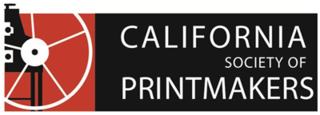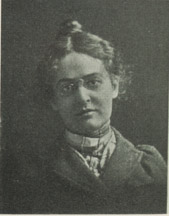
Raymond Saunders is an American artist known for his multimedia paintings which often have sociopolitical undertones, and which incorporate assemblage, drawing, collage and found text. Saunders is also recognized for his installation, sculpture, and curatorial work.
Robert Alan Bechtle was an American painter, printmaker, and educator. He lived nearly all his life in the San Francisco Bay Area and whose art was centered on scenes from everyday local life. His paintings are in a Photorealist style and often depict automobiles.

The California Society of Printmakers (CSP) is the oldest continuously operating association of printmakers and friends of printmakers in the United States. CSP is a non-profit arts organization with an international membership of print artists and supporters of the art of fine printmaking. CSP promotes professional development and opportunity for printmakers, and educates artists and the public about printmaking. New members are admitted by portfolio review. Friends, Institutional and Business members are admitted by fee. CSP is based in the San Francisco Bay Area, California.
Kathan Brown is an American master printmaker, writer, lecturer, and entrepreneur. In 1962, Brown founded Crown Point Press, a fine art print shop specializing in etching, and has owned and directed the shop since then. Crown Point Press is widely credited with sparking the revival of etching as a viable art medium. Some of the most important artists of our time, including John Cage, Chuck Close, Anish Kapoor, Ed Ruscha, Kiki Smith and Pat Steir, have worked there.

Robert H. Hudson is an American visual artist. He is known for his funk art assemblage metal sculptures, but he has also worked in painting and printmaking.
Squeak Carnwath is a contemporary American painter and arts educator. She is a Professor Emerita of Art at University of California, Berkeley.

William Seltzer Rice was an American woodblock print artist, art educator and author, associated with the Arts and Crafts movement in Northern California.
Roland Conrad Petersen is a Danish-born American painter, printmaker, and professor. His career spans over 50 years, primarily in the San Francisco Bay Area and is perhaps best-known for his "Picnic series" beginning in 1959 to today. He is part of the Bay Area Figurative Movement.
Robert Boardman Howard (1896–1983), was a prominent American artist active in Northern California in the first half of the twentieth century. He is also known as Robert Howard, Robert B. Howard and Bob Howard. Howard was celebrated for his graphic art, watercolors, oils, and murals, as well as his Art Deco bas-reliefs and his Modernist sculptures and mobiles.
Elizabeth de Gebele Ginno was a fine artist from Berkeley, California specializing in painting and printmaking. She is known for her participation in the Golden Gate International Exposition (GGIE) and other Works Progress Administration (WPA) projects.
Margo Humphrey is an American printmaker, illustrator and art teacher. She earned a Master of Fine Arts degree from Stanford after earning a Bachelor of Fine Arts degree at the California College of Arts and Crafts in printmaking. She has traveled in Africa, Brazil, the Caribbean, and Europe and has taught in Fiji, Nigeria, Uganda, and the University of Maryland. As a printmaker, she is known for her "bold, expressive use of color and freedom of form", creating works that are "engaging, exuberant and alive." Her techniques for layering colors are uncommon in lithography. Her work is considered to be "in the forefront of contemporary printmaking."
Brian R. Shure is an American printmaker, painter, author and educator. He is best known for his mastery of printing techniques, knowledge of lesser known art techniques and has published multiple books about the art of chine-collé.

Frances Gearhart was an American printmaker and watercolorist known for her boldly drawn and colored woodcut and linocut prints of American landscapes. Focused especially on California's coasts and mountains, this body of work has been called "a vibrant celebration of the western landscape." She is one of the most important American color block print artists of the early 20th century.
Alice Geneva "Gene" Kloss was an American artist known today primarily for her many prints of the Western landscape and ceremonies of the Pueblo people she drew entirely from memory.
Mary Lovelace O'Neal is an American artist and arts educator. Her work is focused on abstracted mixed-media and minimalism. She is a Professor Emeritus, University of California, Berkeley and retired from teaching in 2006. O'Neal's art has been exhibited widely throughout North America and internationally, with group and solo shows in Italy, France, Chile, Senegal and Nigeria. She lives and works in Oakland, California, and maintains a studio in Chile.

Helen Elizabeth Phillips, also known as Helen Phillips Hayter was an American sculptor, printmaker, and graphic artist active in San Francisco, New York, and Paris.

June Felter, was an American painter and illustrator from the Bay Area. Her paintings are in museum collections including San Francisco Museum of Modern Art (SFMOMA), the Oakland Museum of California, Fine Arts Museum of San Francisco, National Gallery of Art, and the Berkeley Art Museum.
Jacques Schnier (1898–1988) was a Romanian-born American artist, sculptor, author, educator, and engineer. He was a sculpture professor at the University of California, Berkeley from 1936 to 1966.

Sylvia Solochek Walters is an American artist and educator. She has produced drawings, paintings and collage works in her career, but is best known for complex woodcut prints created through the "reduction and stencil" process. Her work combines elements of realist, decorative and formalist art, flat and illusionistic space, and varied patterning and textures. She has largely focused on portraits, still lifes and domestic interiors, and collage-like combinations of personal symbolism—concerns that writers often align with early feminist art.
Nancy Genn is an American artist living and working in Berkeley, California known for works in a variety of media, including paintings, bronze sculpture, printmaking, and handmade paper rooted in the Japanese washi paper making tradition. Her work explores geometric abstraction, non-objective form, and calligraphic mark making, and features light, landscape, water, and architecture motifs. She is influenced by her extensive travels, and Asian craft, aesthetics and spiritual traditions.











